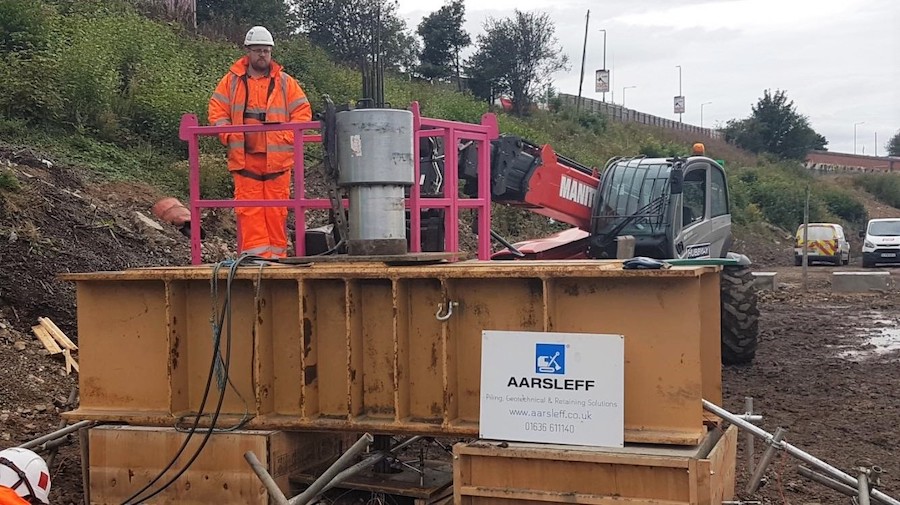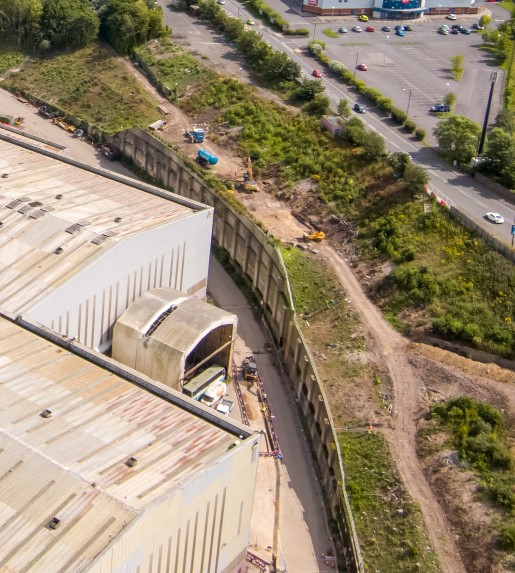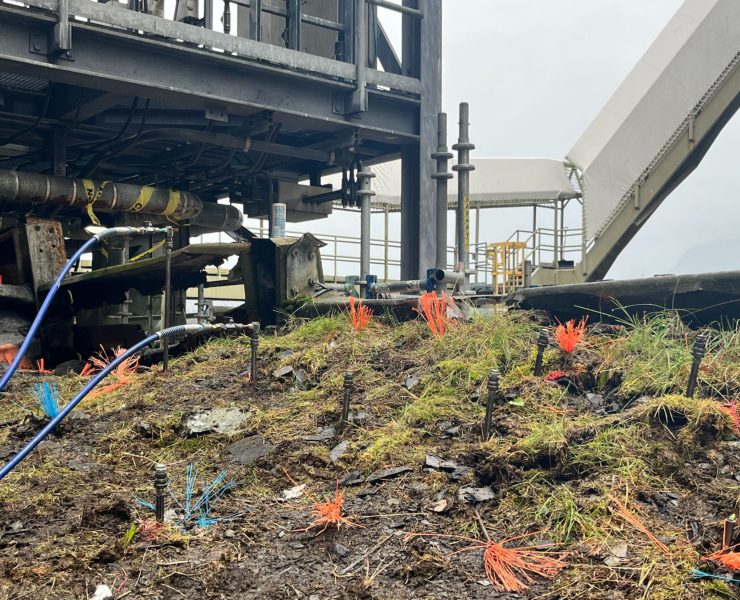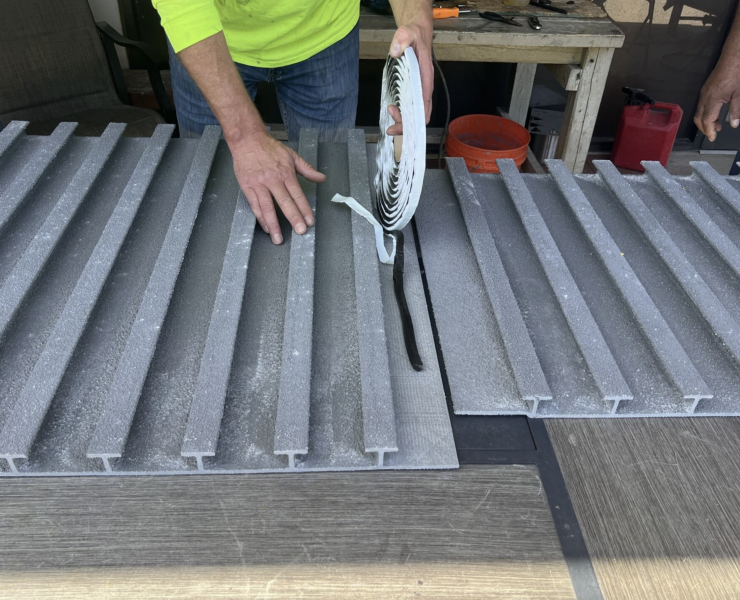Phase 3 of the Sunderland Strategic Transport Corridor (SSTC) Awarded to Aarsleff Ground Engineering Ltd


With an estimated completion date of Autumn 2021, a multi-million-pound project to improve Sunderland’s road network is well underway, moving into the third of five phases. The project will create a dual carriageway through Pallion, running underneath the Queen Alexandra Bridge, into Deptford and onto the city centre and St Mary’s Boulevard. The contract will also deliver a comprehensive Social Value package which includes training and employment opportunities for local residents, support for local primary and secondary students, work experience placements for college and university students and a number of full-time jobs.
The £35.6M construction contract for phase 3 works was awarded to Esh Civils; the civil engineering division of Esh Construction. Andy Radcliffe, Esh Group’s Chief Executive said: “We have a proven track record of infrastructure delivery across a range of sectors and have established a first-class team of professionals to work with our client and our local supply chain to deliver this project”.
Aarsleff Ground Engineering were appointed by Esh to undertake the geotechnical works in early July. These works comprise the design and construction of a contiguous bored pile retaining wall, a large soil nailed wall and a ground anchor investigation trial.
Between August 7th to 30th August 2019, Aarsleff Ground Engineering installed and tested 3No. investigation trial anchors to confirm the ultimate bond stress at the rock/grout interface. Anchor loads in excess of 4000 kN have been successfully proven during the trial. The results shall be used to develop the permanent anchor design for the lower Pallion king post retaining wall.
Aarsleff’s Senior Geotechnical Consultant Dr. Dan Adams said: “The proposed lower Pallion king post retaining wall requires anchor working loads in excess of 2000kN; these will be large anchors with up to 16 No. strands. The trial has allowed us to investigate the load transfer behaviour of the proposed anchors but also confirm the ultimate rock/grout bond stresses achievable in the underlying limestone. This is a great opportunity for Aarsleff to work closely with the Esh team and deliver this technically challenging scheme with our wide range of geotechnical capabilities”.
Andrew Georgeson (Operations Director, Esh Civils) said: “By gaining the successful information from the trial anchors carried out by our partners Aarsleff, we can now verify and continue with our enquiries for detailed design and install for the permanent anchors. Schemes of this nature and size don’t come often, we look forward to engaging further with Aarsleff and other specialists to deliver these works which require precise planning and coordination to maintain accessibility for numerous stakeholders”
 It is anticipated that over 100 No. ground anchors, some with working loads in excess of 2000 kN shall be installed. The specialist contractor’s drilling rigs will operate from both the toe and the top of the proposed lower Pallion king post retaining wall to install up to four rows of anchors. It is expected that the anchors will comprise boreholes of up to 195mm diameter in the founding limestone with anchor lengths up to 30 m. Thee bores shall be supported through the overlying overburden, where required, with temporary casing and advanced with an overburden drilling system using DTHH’s with air flush. Upon completion of drilling to the required depth, the anchor tendons will be installed, and the borehole will be grouted using neat cement grout and adopting low pressure end of casing grouting techniques where appropriate as the temporary casings are removed. Upon completion of the suitability and acceptance testing’s, all anchors will be locked off at the specified load and fitted with non-restressable head assemblies.
It is anticipated that over 100 No. ground anchors, some with working loads in excess of 2000 kN shall be installed. The specialist contractor’s drilling rigs will operate from both the toe and the top of the proposed lower Pallion king post retaining wall to install up to four rows of anchors. It is expected that the anchors will comprise boreholes of up to 195mm diameter in the founding limestone with anchor lengths up to 30 m. Thee bores shall be supported through the overlying overburden, where required, with temporary casing and advanced with an overburden drilling system using DTHH’s with air flush. Upon completion of drilling to the required depth, the anchor tendons will be installed, and the borehole will be grouted using neat cement grout and adopting low pressure end of casing grouting techniques where appropriate as the temporary casings are removed. Upon completion of the suitability and acceptance testing’s, all anchors will be locked off at the specified load and fitted with non-restressable head assemblies.
In late July, Aarsleff Ground Engineering were again appointed to design and install a 600mm diameter contiguous pile wall for a 5m retained height. The specialist will bore, concrete and reinforce 115No. contiguous piles at 750mm centres for an overall wall length of 85m, complete with 63mm inclined drains running at 1.5m centres to the base of the wall. This is expected to be completed in a 4-week programme.
Aarsleff Ground Engineering have also been contracted for the design and installation of the soil nailing works on this scheme, where it will install 1198No. soil nails for a 1995m2 face area. The specialist will install 9-12m long self-drilling soil nails and inclined drains for the permanent stabilisation of cut slope. They will fix galvanised A393 Mesh to face and secure with soil nail headplates. A non-structural facing with 300mm thick stone filled gabion baskets will then be installed bottom-up. Aarsleff’s soil nail sequence is based on deploying 2 soil nailing rigs working continuously in a top-down construction sequence, for approximately 9 weeks. The installation of the non-structural gabion facing should take 11 weeks.
Dr. Dan Adams added: “We are delighted with the award of these challenging geotechnical works. Delivering an alternative contiguous bored pile wall combined with the large soil nailed retaining structure and the permanent anchors for the Lower Pallion wall will require close team work and good communication with our Client and Clients team in order to deliver the works safely, on time and to budget.”
Aarsleff Managing Director Kevin Hague said: “Major infrastructure schemes like the Sunderland Strategic Transport Corridor will always require accurate and robust planning as well as logistics and thorough communications between all parties involved throughout the project duration. It is therefore a great pleasure of mine to be working with Esh again, a company whom we have built a great working relationship with having worked on several projects before in the North-East. In 2016, we stabilised a steep bankside in Pelaw Woods, Durham. In 2018, we installed soil nails for the steepening of an embankment in Gosforth and most recently in 2019 we installed a contiguous pile wall for the road widening scheme on Killingworth Road in Newcastle.”

















